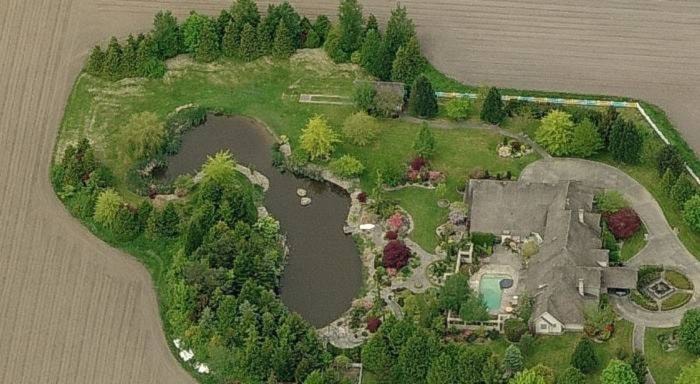City council has decided to regulate residential footprints on farm properties, but in a way that isn’t strict enough according to the provincial government and the Agricultural Land Commission (ALC).
The end result of more than a year of discussion over the so-called Farm Home Plate culminated in a public hearing at the June 20 meeting of council at which only one person spoke, and he did so in favour.
The discussion over the Farm Home Plate is not the same as the issue over monster homes that has been ongoing in other parts of the Lower Mainland. The home plate is defined as an area of an agriculture property where all residential and related buildings, structures and activities are clustered.
After “extensive” consultation with stakeholders, council decided on a maximum area of 4,000 square metres with maximum setbacks from the property line of 80 metres. That farm home plate size is larger than in other communities such as Delta, Surrey, Maple Ridge and the District of Kent, and double the recommendations of 2,000 square metres from the province. The province also recommends a maximum of 60 metres for setbacks.
“We have been the most generous of other communities that have adopted this,” Coun. Chris Kloot said at the meeting last Tuesday.
Kloot himself is a farmer and a realtor, and is chair of the city’s Agricultural Advisory Committee, which was involved in the final recommendation for council to consider.
Included in the staff report to council was letters from both the Ministry of Agriculture and the ALC, both of which took issue with some elements of the bylaw as proposed. In a letter signed by ministry agrologists Chris Zabek and Alison Fox, the two took issue with Chilliwack’s allowance for siting of the farm home plate at the rear of a property. One concern is that houses at the rear of properties can put them too close to other farming operations. This can be disruptive because of noise, dust or odour. Speaking specifically to blueberry farms, the agrologists said a house at the rear of an adjacent property could mean a berry farmer would be restricted from using audible bird scare devices.
“We therefore have serious concerns that the proposed bylaw amendment may encourage development detrimental to agriculture which has previously not occurred,” according to the ministry.
Kloot, however, said there are certain unique properties where different siting makes more sense and the province’s one-size-fits-all approach isn’t appropriate for every community.
“I am going to respectfully disagree in their letters,” he said at the June 20 meeting. “Every community is unique and we have to do what is right for our community.”
Kloot went further pointing to the what some think is meddling by the provincial government in a farming community’s bylaws on the one hand, and not consulting with communities regarding agri-tourism or allowing marijuana growing on farmland on the other.
“They didn’t come to us when they talked about events or about marijuana grow-ops and look at the mess we are in now.”
The Official Community Plan amendment and zoning amendment adopted by the city was in a much different form from a year ago when the item was sent back to staff following a motion to do so by Kloot.
“Is it perfect? No,” Kloot said of the new version approved. “Is it better than what we have? Yes.”
